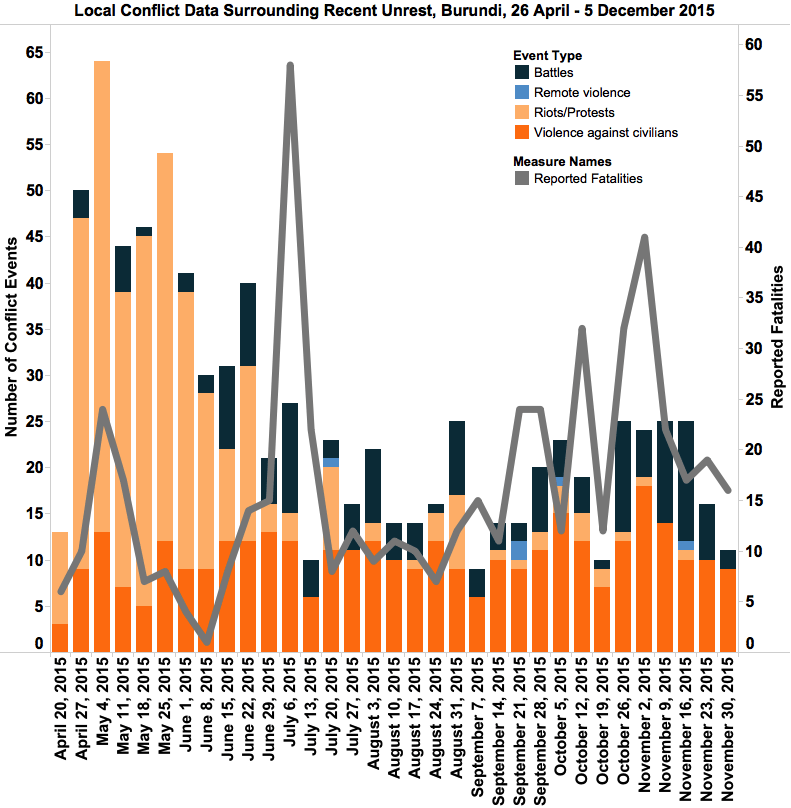A new update of the recent unrest in Burundi, covering events from 26 April to 5 December 2015 has been released by ACLED. This update can be found here. These real-time data draw primarily on crowd-sourced information available from 2015Burundi as well as from ACLED’s weekly real-time conflict data release.
Burundi saw a slight decrease in the number of reported conflict events while the number of reported fatalities remained similar to that seen the week prior. There has been a recent trend of bodies being discovered in areas other than where they were killed, making it difficult to decipher whether the violence was perpetrated by police, non-government armed groups, or some other conflict actor. On December 1, residents discovered three bodies in Mutakura, but did not see any fresh blood nearby. Residents believe the victims were killed during gunfights and explosions in neighbouring Kinama the night before, then dragged to Mutakura. On December 2, four beheaded bodies were found in the Ntahangwa area of Cibitoke. The deceased are thought to have been executed in another area of Bujumbura before being covered and hauled to Ntahangwa.
Another new trend is the presence of Burundi’s API Unit (Appui pour la protection des institutions), a police division responsible for protecting state institutions. On December 5, reports states that members of the API Unit attacked and injured a radio station correspondent in Muyinga. In Bwiza the day before, an armed group dressed in API uniforms targeted police general Christophe “Wakenya” Manirambona. Whether the attackers were actually API officers or only disguised as such, they succeeded in killing three people. Manirambona was not in the vehicle at the time of the attack.
As November came to a close, there was a drastic drop in the number of riots and protests. Only one riot at a prison and one protest at a school occurred in the entire month of November; neither incident was directly related to the current political situation. This marks a clear shift in a crisis that began as a slew of anti-Nkurunziza protests, but has since become a mass of street battles between police and opposition groups that have taken up weapons. At the start of the conflict in April, May, and June, riots and protests made up the majority of conflict events, with the number of fatalities staying relatively low (with the exception of the week of May 4). Once riots and protests subsided in July, and battles and violence against civilians became the most common conflict events, the number of reported fatalities has noticeably increased. Although fatality numbers have fluctuated over the past three months, they have overall remained higher than in the first three months of the crisis.
For more on Burundi local data coverage and analysis, see ACLED’s prior posts on this topic.






